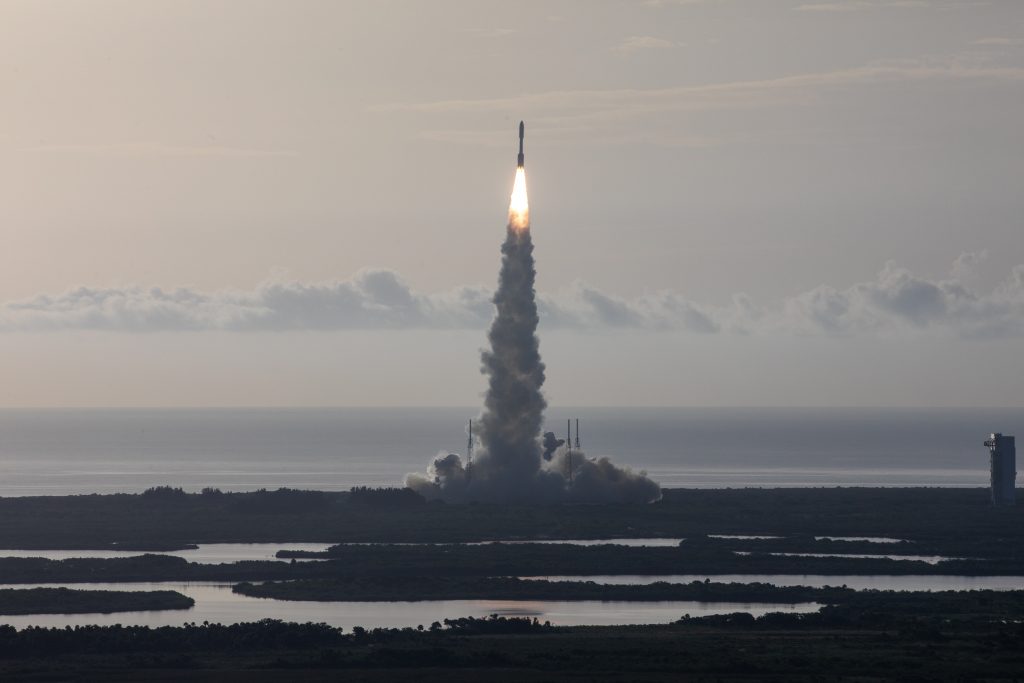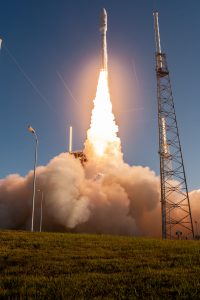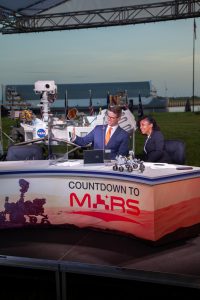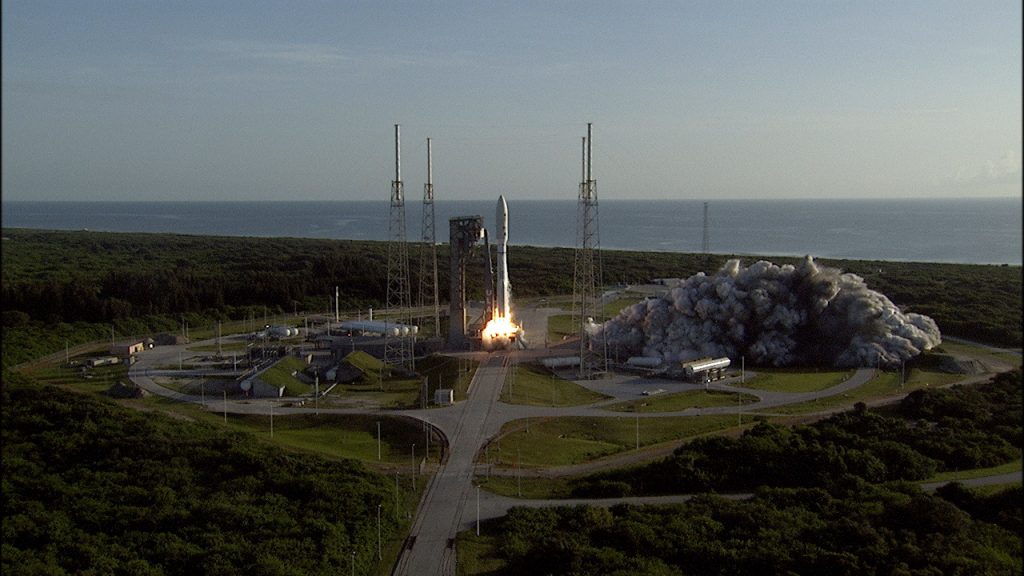
By Jim Cawley
NASA’s Kennedy Space Center
Not obstacles, not complexity — not even a worldwide pandemic — could keep NASA’s Mars 2020 Perseverance rover from blasting off on its historic mission to the Red Planet.
On Thursday, July 30, at 7:50 a.m. EDT, Perseverance lifted off aboard a United Launch Alliance (ULA) Atlas V 541 rocket from Space Launch Complex 41 at Cape Canaveral Air Force Station in Florida, bound for a Feb. 18, 2021, arrival to Mars, where it will touch down on the surface of Jezero Crater.
“It was an amazing launch; very successful,” NASA Administrator Jim Bridenstine said during Thursday’s post-launch news conference at NASA’s Kennedy Space Center in Florida. “It went right on time, it is on a trajectory now that has been done with pinpoint accuracy, and it is, in fact, on its way to Mars.”

Due to the alignment of Earth and Mars, the mission’s launch period would have expired on Aug. 15. That placed increased importance on hitting the window; otherwise, the rover would have needed to be stored for two years, until the next favorable alignment.
“(The ULA and Launch Services team) gave us a perfect launch this morning — right down the middle; couldn’t have aimed us any better,” said Matt Wallace, deputy project manager at NASA’s Jet Propulsion Laboratory. “They really pushed hard to keep us on this limited planetary launch window in 2020.”
With its unique and distinct challenges, COVID-19 certainly threatened that timeline. Wallace admitted there have been “very strenuous moments” in the past few months dealing with the pandemic.
“It really took the entire agency to step up and help us; and they didn’t hesitate,” he said. “The team out there — thousands of people — have really made this a special mission. As people have eluded to, ‘Perseverance’ has become a pretty good name for this mission.”
Launch Director Omar Baez of NASA’s Launch Services Program beamed with pride following his team’s flawless effort.

“Fantastic, honored, proud, ecstatic — those are the kind of words I can think of right now,” Baez said. “We hit right at the beginning of the window, and the vehicle performed perfectly. It’s just a proud moment, and I’m glad our program provided what was needed to get this on the way.”
ULA President and CEO Tory Bruno said before the launch that the rocket would leap off of the pad. On a calm, clear, and beautiful Florida day, that’s exactly what happened.
“We ignited, the Atlas performed nominally throughout the mission, and we ended with just an extraordinarily accurate orbital insertion,” Bruno said.
About the size of a car with dimensions similar to the Curiosity rover, Perseverance carries seven different scientific instruments. The rover’s astrobiology mission, developed under NASA’s Mars Exploration Program, will search for signs of past microbial life. It will characterize the planet’s climate and geology, collect samples for future return to Earth, and pave the way for human exploration of the Red Planet.
The mission marks the first time in history that samples will be collected to bring back to Earth from another planet. Another first: Ingenuity, a twin-rotor, solar-powered helicopter attached to the belly of the rover, will become the first aircraft to fly on another world.
Perseverance will spend at least one Martian year, or approximately two Earth years, exploring the landing site region on the Red Planet. Though the mission has a long way to go, Thursday’s launch sent it off to a terrific start.
“I loved it,” said NASA Associate Administrator Thomas Zurbuchen. “It’s like punching a hole in the sky.”





 The latest weather update is in, and it’s exactly what we’ve been hoping for.
The latest weather update is in, and it’s exactly what we’ve been hoping for.